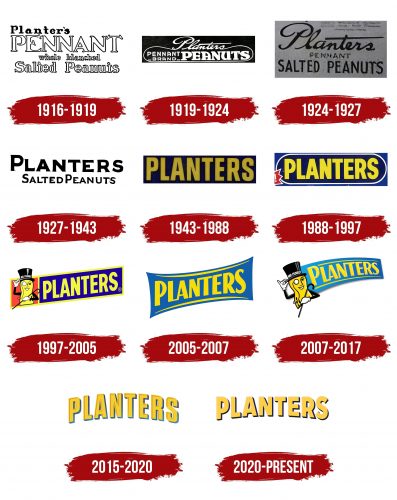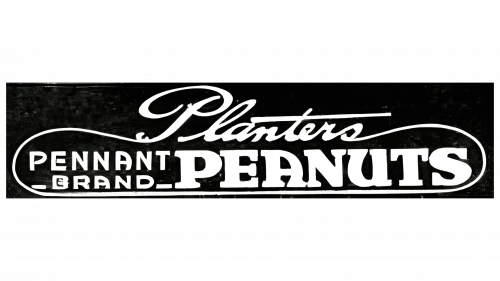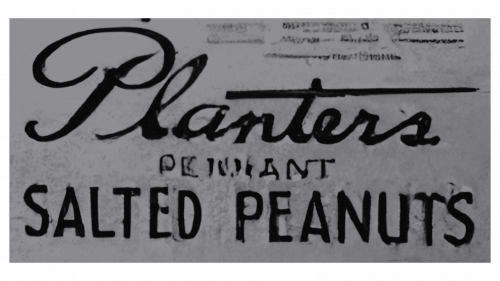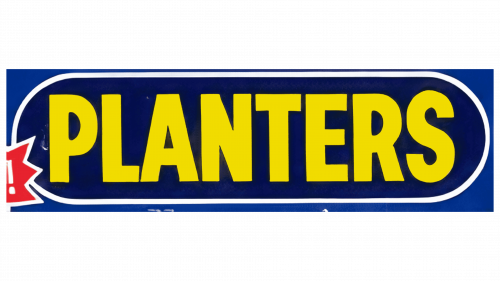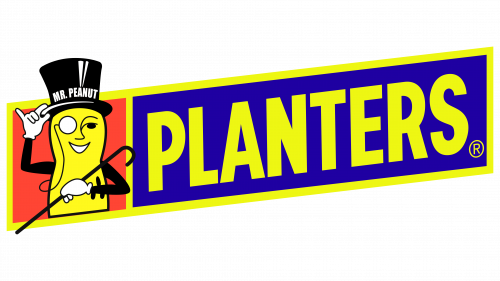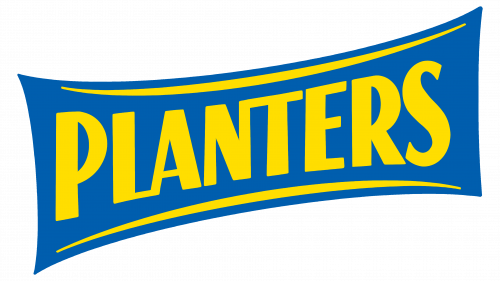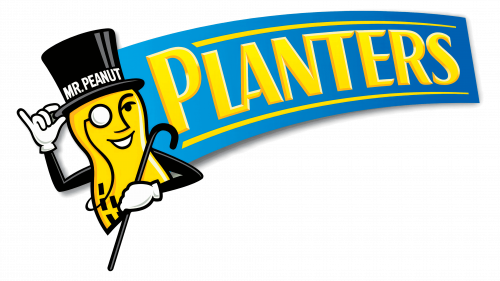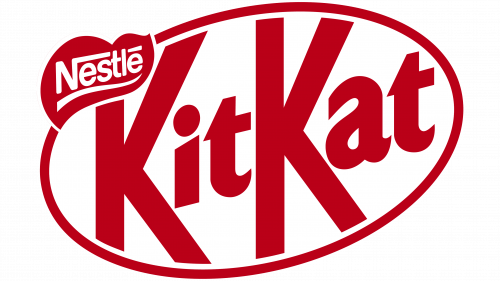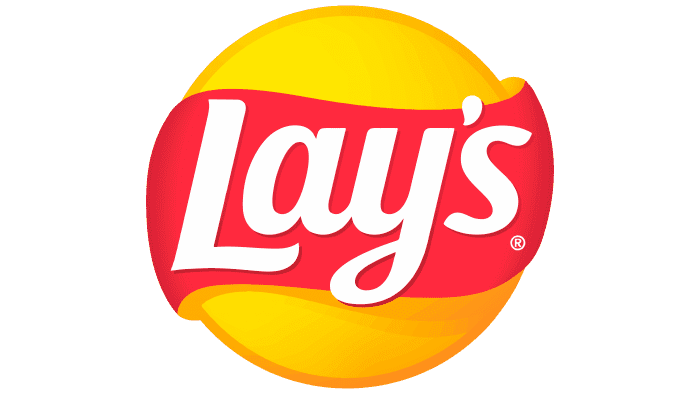The Planters logo evokes crunchy roasted nuts that you immediately want to try. Every emblem element reflects this satisfying treat’s quality and memorable taste. The logo emphasizes the snack’s versatility, as it contains essential nutrients and is perfectly suited as a complete alternative to other snacks.
Planters: Brand overview
Amedeo Obici, an Italian immigrant, started a tiny company in 1906 that sold roasted peanuts on the streets of Wilkes-Barre, Pennsylvania, marking the beginning of Planters’ history. When Obici first came to the United States at eleven, he operated a little street cart and sold freshly roasted peanuts. His product’s superior quality and delicious flavor made it quite popular among the locals.
With Mario Peruzzi, another Italian immigrant, Obici formed the Planters Nut and Chocolate Company in 1908. This increased their output, and they started supplying peanuts to the neighboring communities. The business expanded quickly, and in 1913, it established its first processing facility in Suffolk, Virginia, which rose to prominence as the “Peanut Capital of the World.”
1916 is significant for the company since it saw the creation of the now-famous Mr. Peanut business logo. Antonio Gentile, a schoolboy, won the best logo design competition. His creation featured an anthropomorphic peanut with a cane, a top hat, and a monocle. After being further developed by a professional artist, Mr. Peanut was adopted as the official brand mark and is still used today.
The brand started broadening its product line in the 1920s. The company began manufacturing various nuts in addition to peanuts, candies, and chewing gum. This diverse product range helped the business weather the 1930s Great Depression when many other companies were forced to close.
The firm started promoting its products on television in the 1950s. Customers’ identification of the brand was further cemented when Mr. Peanut rose to fame in advertising. In this period, the company began to export to Europe and Canada, broadening its global reach.
The business’s output increased during the 1960s. New factories opened in several states in the United States, enabling higher production and wider distribution. The company first released its well-known “Dry Roasted Peanuts” in 1961, quickly becoming popular among health-conscious consumers.
When Standard Brands bought the company in 1981, it created additional avenues for brand growth. Two years later, in 1983, Nabisco Brands and Standard Brands combined to establish Nabisco Brands, Inc. This combination gave the company access to a wider distribution network and more resources for innovation.
The 1990s were a time of active innovation for the brand. The company unveiled several new products, such as flavored nuts and other nut and dried fruit mixtures. Establishing its website in 1995 was an important milestone in the company’s digital marketing strategy.
The company joined Kraft Foods in 2000 after the latter company purchased Nabisco. This created new avenues for brand growth and integration into the wider range of products Kraft Foods offers.
There were several noteworthy marketing efforts throughout the 2010s. In 2010, the actor Robert Downey Jr. voiced Mr. Peanut in ads for the first time, increasing brand awareness. The “Naturally Remarkable” campaign, showcasing the products’ natural and nutritious benefits, was introduced in 2011.
In honor of its centennial in 2016, Mr. Peanut underwent a redesign that made him more contemporary while keeping his iconic traits. The same year, the company introduced the NUT-rition product line, targeting health-conscious consumers.
The new Flavored Nuts collection, which included peanuts flavored with cinnamon and fiery jalapeño, was introduced in 2018.
The brand was part of Kraft Heinz, which announced plans to sell it in 2019. This action fits into the company’s plan to reorganize its portfolio of brands.
The manufacturer launched a marketing campaign focused on Mr. Peanut’s “death” in 2020. This unconventional tactic attracted a lot of media and public interest. Mr. Peanut gave his life in a commercial that aired during Super Bowl LIV to save his companions. This campaign created a social media frenzy that resulted in many memes and conversations.
Nevertheless, Mr. Peanut was “reborn” as Baby Nut in another Super Bowl ad a few days later. This marketing strategy aimed to attract a younger audience and revitalize the brand’s image. Baby Nut gained popularity on social media quite fast, which helped young people recognize the brand.
An important development in the company’s history happened in February 2021 when the business was sold to Hormel Foods Corporation for $3.35 billion. Kraft Heinz plans to reorganize its brand portfolio and concentrate on key product categories included in this acquisition. By purchasing the company, Hormel Foods was able to fortify its nut industry position and increase its snack sector footprint.
Hormel Foods invested in the brand’s growth after the acquisition. In mid-2021, a new product line named Planters Protein was introduced to cater to the expanding market for high-protein goods. This line featured combinations of nuts and seeds enhanced with extra plant protein.
The company altered its product packaging around the end of 2021. While keeping Mr. Peanut and other iconic brand characteristics, the new design was more contemporary and attractive to a younger demographic. The package included nutritional information to cater to consumers’ rising interest in eating healthily.
Additionally, the business increased its global footprint. The company started aggressively marketing its goods in Europe and Asia while customizing them to fit regional preferences and interests. For instance, distinct peanut flavors like wasabi and soy sauce were introduced in Japan.
The brand debuted a new product range in 2023 called “Craft.” This premium line featured mixtures and nuts roasted differently and had unconventional flavor combinations. “Craft” was designed to draw foodies and anyone who likes trying new cuisines.
Additionally, the company started the “Nut Knowledge” educational initiative to spread the word about nuts’ health advantages. As part of this campaign, the business hosted online seminars, worked with nutritionists and dietitians, and produced educational content for social media.
The business successfully merged into Hormel Foods while retaining its distinct character and dedication to the high standards set more than a century ago by Amedeo Obici.
Meaning and History
What is Planters?
It is an American snack brand known for its wide range of nuts and nut-based products. The company’s mascot, Mr. Peanut, a dapper anthropomorphic peanut wearing a hat, monocle, and cane, has become widely recognizable in American advertising. The company offers a wide range of products, including peanuts, cashews, almonds, pistachios, and mixed nuts, in various flavors and formulations, such as roasted, salted, and flavored varieties. The brand has expanded beyond traditional nuts and now includes peanut butter, blends, nut bars, and other snacking products. The company has also adapted to changing consumer preferences by offering products with reduced sodium and more diverse flavors. With its long-standing presence in the U.S. snack market, the company has established itself as a trusted brand for nut and snack lovers.
1916 – 1919
By the time this logo was introduced, the brand had been on the market for over ten years, and the identity was developed following the opening of the company’s factory. The emblem consisted of text clearly explaining what the brand offered customers. The first logo displayed the brand name “Planters” as a pennant. The company’s name was bold and the largest element on the emblem, emphasizing its market leadership and association with quality peanuts.
Below the name was a statement explaining that the product had undergone blanching—a special method of removing the skin using steam. This message highlighted the convenience for customers, who no longer needed to shell the peanuts themselves.
At the bottom of the logo, the words “salted peanuts” were prominently displayed, clearly indicating the product type. Most of the text was designed with a black outline and a white interior, symbolizing the peanut’s roasted, golden-brown exterior and white core.
1919 – 1924
The logo appears elegant and balanced, though its style is disconnected from the food product theme. The rebranding was an attempt to give the snacks, often sold from street carts, a more refined and cultured appearance that could attract customers from various social backgrounds.
The new emblem focuses on the primary product—peanuts. The word “peanuts” is bolded, drawing immediate attention. To the left, the phrase “pennant brand” is added in thin letters, interpreted as a mark of excellence, a champion brand.
The brand name, written in ornate script, is placed at the top of the emblem. The ends of the letters frame the rest of the logo, creating a border resembling a peanut’s shape. The black background lends the logo a sense of sophistication and emphasizes its association with a roasted product.
1924 – 1927
The emblem once again shifted the focus to the brand. The name “Planters” is presented in a large font that stands out from the rest of the composition, drawing primary attention. The long horizontal stroke of the letter “t,” resembling a pen flourish, adds elegance to the logo. Following it, the word “pennant” is placed in a smaller font, smoothly transitioning into a larger explanation of the package’s contents: “salted peanuts.” This design emphasizes the importance of the brand and indicates the product inside the package.
1927 – 1943
The logo became more concise and straightforward. The word “pennant,” which was neither part of the brand nor the company name, was removed from the emblem, making the design cleaner and more focused. The font was unified, giving the logo a more cohesive look. The “Planters” brand is now highlighted in large letters, while the descriptive text “salted peanuts” has been reduced in size, emphasizing the brand and making the logo more modern and appealing.
1943 – 1988
Color and simplicity became the defining features of the new logo. The yellow letters evoke the golden, roasted sides of peanuts, adding a sense of warmth and appetite appeal. The bold and large characters highlight the brand’s popularity and significant market share. The dark blue background complements the text, symbolizing the brand’s expertise and emphasizing its long history and reliability.
1988 – 1997
The name was placed inside a capsule with a white outline, visually resembling an elongated peanut kernel. This design choice emphasized the whole nuts in the packaging, strengthening the association with the product and enhancing the logo’s appeal and recognizability.
1997 – 2005
In 1997, the company made significant efforts to refresh the brand’s image. The slogan, logo style, and mascot were all updated. The slogan “Relax. Go Nuts.” was introduced, along with Mr. Peanut, a character created by schoolboy Antonio Gentile early in the brand’s history.
The friendly gentleman Peanut, wearing a top hat and monocle and carrying a cane, peeked out from the left side of the emblem. His constant smile and welcoming demeanor created a warm connection with customers. The image of Mr. Peanut, rooted in the early 20th century, emphasized the company’s longevity and traditions.
In the modern emblem, Mr. Peanut became a symbol of the brand’s long-standing presence, signifying the quality of the snack and its versatility in any setting. The red background of the window hinted at roasting in a hot oven, evoking associations with the preparation process. On the right, against a rising blue background, was the brand name in yellow text, with its upward angle symbolizing prosperity, success, and the company’s continual growth.
A yellow outline tied all background elements together, giving the logo a cheerful and welcoming appearance perfectly suited for engaging with consumers.
2005 – 2007
The butterfly-shaped curve of the background gave the logo a more cartoonish and dynamic look, even without the mascot. The yellow lines above and below the text symbolize premium, large nuts, making the logo resemble a treat’s packaging. The lighter and brighter blue color appeared much more delicious than the deep, dark shades used previously. This design restored elegance to the logo and improved its appeal compared to the straight lines of the previous emblem.
2007 – 2017
The mascot was integrated with the previous text, altering the overall appearance of the logo. The logo lost its smooth concave lines but gained a sense of perspective. It now gives the impression that the logo starts near the viewer and recedes into the distance, gradually shrinking in size at the far end. In the foreground, at the edge, stands the friendly Mr. Peanut, inviting people to try the brand’s products.
2015 – 2020
In 2015, when the parent company transformed into Kraft Heinz, the emblem was redesigned with a minimalist approach. The yellow text, with letter edges shaped like borders, is arched in a curve, adding a sense of dynamism to the logo. The absence of a background and illustrations shifted the focus entirely to the brand name. This minimalist approach highlighted the company’s longstanding commitment to consumer well-being and its dedication to offering new, high-quality products. Under Kraft Heinz’s management, the brand will continue to thrive, preserving beloved snacks and flavors. The new logo conveyed this message.
2020 – today
In 2020, the logo was updated to be as modern as possible to prepare for the sale of its nut brands, which was announced a year later.
Roasted nuts remain a favorite snack for many Americans, and the new Planters logo conveys this message, including that of Kraft Heinz’s new owner. It is bright and contemporary and draws attention to the brand’s quality, taste, and reliability. The logo continues to uphold the brand’s image as a leader in the nut market, symbolizing not only the satisfaction but also the pleasure that the product brings to its consumers.
The Planters brand icon, updated in 2020, underwent changes that made it more modern and confident. It now features bright, bold, three-dimensional letters in a rich yellow color with black sides. This color combination creates a strong contrast, symbolizing the brand’s stability and confidence in the market.
The three-dimensional aspect of the letters gives the emblem depth and a sense of stability. It looks as if it stands on a solid foundation, signifying the durability and reliability of the product. The emblem’s enlarged first and last letters emphasize the brand’s consistent quality from its inception to the present day. This approach helps highlight the brand’s long history and traditions, which have successfully maintained its position for many decades.
The logo also conveys an important message about the product’s heartiness. Its bold and robust design symbolizes that one package of Planters nuts is enough to satisfy hunger without additional supplements. This reflects the brand’s core message: everything needed for a delicious and nutritious snack is already inside the package.

